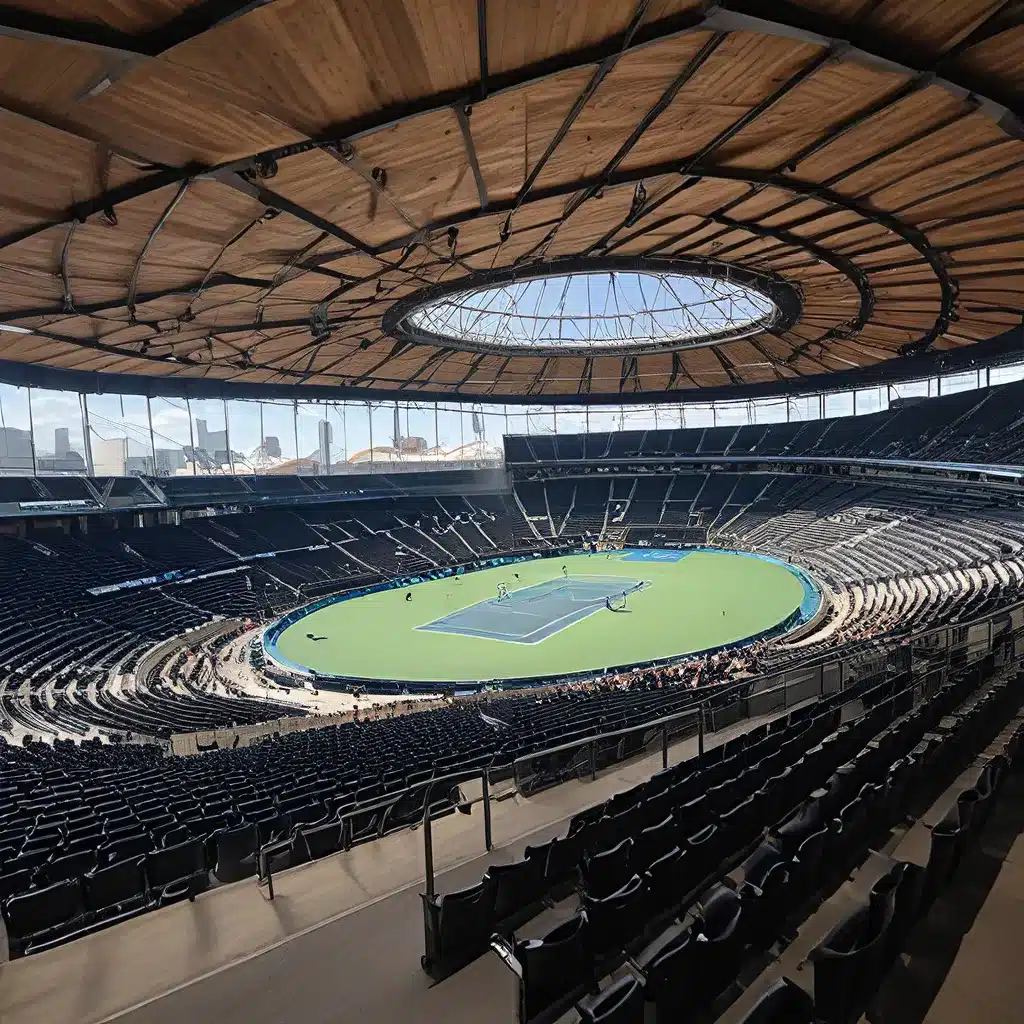
As the home of the Australian Open, one of the four Grand Slam tennis tournaments, Melbourne Park has established itself as a world-class sporting venue that seamlessly blends innovative architecture, cutting-edge technology, and a deep-rooted commitment to the sport of tennis. Situated in the heart of Melbourne, Australia, this expansive complex has become a testament to the city’s enduring passion for sports and its ability to host international events of the highest caliber.
The Evolution of Melbourne Park
Melbourne Park has undergone a remarkable transformation over the years, evolving from a relatively modest tennis facility to a sprawling, state-of-the-art complex that can accommodate the growing demands of the Australian Open. The journey began in the late 1980s when the decision was made to relocate the Australian Open from the aging Kooyong Stadium to a new purpose-built venue in the heart of the city.
The selection of the site near the Yarra River was a strategic move that not only provided ample space for expansion but also allowed the complex to be integrated seamlessly into the urban landscape. The initial construction phase, completed in 1988, saw the creation of the iconic Rod Laver Arena, named after the legendary Australian tennis player. This arena, with its distinctive domed roof, quickly became the centerpiece of the complex and the primary venue for the Australian Open.
As the popularity of the event grew, so too did the need for additional facilities. Over the subsequent decades, Melbourne Park underwent a series of expansions and renovations, each aimed at enhancing the experience for players, spectators, and the broader tennis community. The addition of Margaret Court Arena and Melbourne Arena (now known as John Cain Arena) expanded the complex’s capacity and provided more versatile spaces for both tennis and other sporting events.
Innovative Design and Sustainability
One of the most remarkable aspects of Melbourne Park is its commitment to innovative design and sustainable practices. The complex’s architecture seamlessly blends modern elements with nods to the city’s heritage, creating a unique and visually striking environment.
The Rod Laver Arena, for instance, features a retractable roof that can be closed in inclement weather, allowing for uninterrupted play. This technological marvel, combined with the arena’s acoustically-engineered interior, ensures that the Australian Open can be enjoyed by spectators regardless of the weather conditions.
Sustainability has also been a key focus in the development of Melbourne Park. The complex incorporates various eco-friendly features, such as water harvesting systems, solar panels, and energy-efficient lighting, all of which contribute to its environmental sustainability. These measures not only reduce the complex’s carbon footprint but also serve as a model for other large-scale sporting venues around the world.
A Hub for Sports and Culture
Beyond its role as the home of the Australian Open, Melbourne Park has become a hub for a diverse range of sports and cultural events. The complex’s versatility is showcased through its ability to host everything from international tennis tournaments and major sporting events to concerts, conferences, and community gatherings.
The presence of facilities like the Australian Institute of Sport and the Victorian Institute of Sport within the complex further cements Melbourne Park’s status as a center of excellence for sports development and high-performance training. These institutions work closely with the organizers of the Australian Open to ensure that the event continues to attract the world’s best tennis players and provide them with the resources they need to compete at the highest level.
Embracing the Local Community
Melbourne Park’s impact on the local community is equally significant. The complex’s free public transport options, including the city’s iconic tram system, make it easily accessible to residents and visitors alike. The abundance of public art and green spaces within the complex also contribute to the overall sense of community, offering a welcoming and inclusive atmosphere for all who visit.
As a hub for sports, entertainment, and cultural exchange, Melbourne Park has become an integral part of the fabric of Melbourne, cementing the city’s reputation as a global leader in the world of sports and events. The complex’s continued evolution and commitment to excellence serve as a testament to the power of sports to bring people together, transcend boundaries, and inspire future generations.
Conclusion
The Melbourne Park complex is a shining example of how a world-class sporting venue can seamlessly integrate into the fabric of a city, becoming a source of civic pride and a catalyst for community engagement. From its innovative architectural design to its dedication to sustainability and its role as a hub for sports, culture, and entertainment, this expansive facility has set a new standard for what a modern sports complex can be.
As the home of the Australian Open, Melbourne Park continues to captivate audiences around the world, showcasing the best of Australian tennis and the city’s enduring passion for the sport. The complex’s ability to adapt and evolve, while maintaining its commitment to excellence, ensures that it will remain a beacon of inspiration for sports enthusiasts and event organizers alike for years to come.

